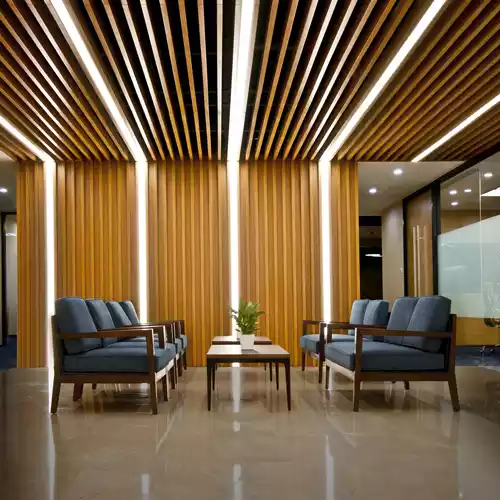Human-centric lighting promises to optimize workplace productivity through circadian rhythm support, but implementation requires understanding the photobiological mechanisms behind melanopic illumination.
Melanopic equivalent daylight illuminance drives circadian response. Traditional photopic measurements (lux) don’t capture the spectral content that affects circadian rhythms. Melanopsin-sensitive retinal ganglion cells respond primarily to short-wavelength blue light (460-490nm). Commercial luminaires claiming circadian benefits must provide adequate melanopic EDI values—typically 250+ mEDI during active hours.
Spectral tuning requires precise LED combinations. Dynamic white systems adjust correlated color temperature from 2700K to 6500K throughout the day. However, simple warm-cool LED mixing may not provide sufficient spectral richness for effective circadian stimulation. Advanced phosphor systems or dedicated circadian LED channels are necessary for proper melanopic content.
Timing protocols affect workplace integration. Circadian lighting systems require coordinated control schedules aligned with local sunrise/sunset patterns and occupancy schedules. Many installations fail because static high-CCT lighting at inappropriate times can actually disrupt circadian rhythms rather than support them.
Vertical illuminance matters more than desktop levels. Melanopsin receptors respond to light entering the eye directly, making vertical illuminance at eye level more important than horizontal work surface illumination. Traditional office lighting optimized for desk tasks may provide insufficient circadian stimulus despite adequate task illumination.
Individual differences complicate universal solutions. Age, genetics, and personal chronotypes affect circadian light sensitivity. Fixed lighting schedules may benefit some occupants while having minimal effect on others. Advanced systems incorporate occupant feedback and adjustment capabilities.
Implementation strategy: Measure both photopic and melanopic illuminance levels during commissioning. Document control sequences and provide occupant education on system operation.
Circadian lighting success requires photobiological precision, not just color temperature changes.
